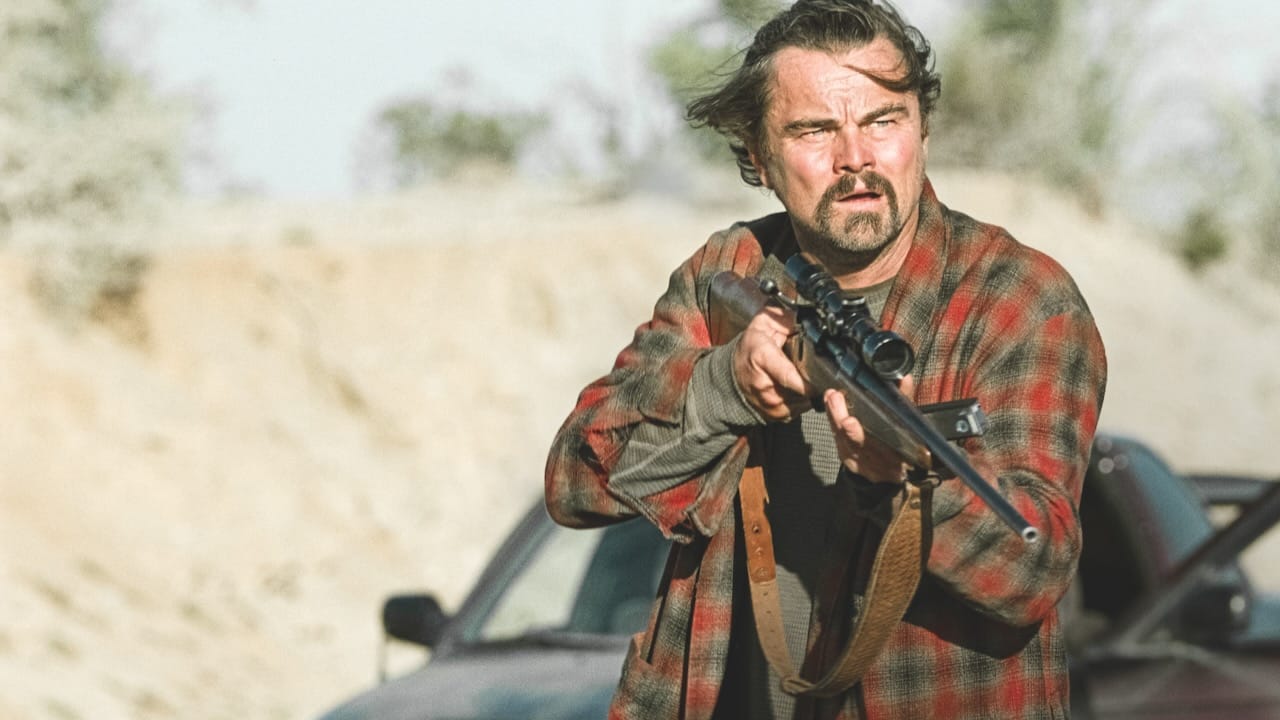Paul Thomas Anderson Triumphs in "One Battle After Another"
Director Paul Thomas Anderson depicts absurdity and violence as daily American life in his latest film "One Battle After Another".

If someone told me in 2018, after watching There Will Be Blood for the first time, that Paul Thomas Anderson would go on to make an epic, three hour comedy/action thriller in 2025, I would’ve laughed in their faces. Somehow, this hypothetical timeline has become a reality and an even more thrilling one than I could’ve hoped for.
The breakneck pacing of One Battle After Another marks a complete tonal shift, from the slow, brooding and methodical style that the California auteur is known for. Instead of resembling the period dramas and complex character studies of Anderson’s past films, the cinematic adaptation of Thomas Pynchon’s book Vineland draws from aspects of other films like the institutionally corrupt neo-western atmosphere of Sicario, the screwball comedy of Raising Arizona, and the maximalist absurdity of It’s a Mad, Mad, Mad, Mad World.
With all the stylistic changes in this film, there are also a good number of fresh faces in the cast. It feels long overdue to see Leonardo DiCaprio in a Paul Thomas Anderson film, but they go above and beyond making up for lost time with the star actor giving his best performance since 2015’s The Revenant as a stoned, paranoid, and washed-up revolutionary who has to rediscover his courageousness in order to find his missing daughter. Teyana Taylor once again shows that she is a star in the making with a layered performance as the morally complex character Perfidia. Benicio Del Toro steals the show as a calm and collected hypeman who saves the day multiple times in the film. Surprisingly, newcomer Chase Infiniti makes an impressive cinematic debut and successfully carries chunks of the film on her own.

Last but not least, two time Best Actor winner Sean Penn came out of hibernation to deliver a career defining performance as Col. Steven Lockjaw. Lockjaw is a high-ranking nationalist military official who feels far too close to our current reality for comfort. Penn’s highly detailed and nuanced performance is both enlightening and darkly comedic. He manages to show manifested hatred in every micro-expression while alluding to emptiness and vulnerability beneath the mask of white supremacy.
The film is technically impressive, especially considering that this is Paul Thomas Anderson’s first action film. The editing is impeccable and makes an almost three hour film feel like a brisk 90 minutes. One thing that really stood out was the epic car chase towards the end of the film. Going up and down winding roads, the camera setup gives the chase an immersive feel that makes the viewer feel the elevation changes in their stomach. Due to the limited visibility in car mirrors and driving unpredictable roads at high speeds, it created an added element of suspense of not knowing the exact location of the other car from each point of view.
When you combine these factors with the clever ending, the car chase is the best of the decade so far and arguably the best since the one in The French Connection. One can only hope that Paul Thomas Anderson returns to the action genre sooner rather than later because he certainly has the technical chops for it. With his tenth film, Anderson has established himself as one of the best living American filmmakers with unmatched versatility and potential yet to be tapped.

Even though there is very little to criticize with this film, the only minor fault I find with it centers around the soundtrack and score. I must admit that the needle drop of Steely Dan’s “Dirty Work” is incredible, but also feels too stylistically familiar to songs in previous Anderson films for an artist venturing into unexplored terrain. The same critique also applies to Jonny Greenwood’s score. It matches the pace of the film but fails to lift it to new heights. With a film conceptually centered around the idea of revolution, I would expect the music to match that energy by being forward thinking and more boundary pushing. The revolution may not be televised, but it also won’t have Steely Dan or the Jackson 5 playing in the background.
One Battle After Another is an instant classic that manages to examine the past, present, and future complexities of American politics and the never ending battle for human rights that has persisted into the 21st century. For all the heavy themes and flawed depictions of humanity examined in the film, it manages to be wildly funny and entertaining in a way that many films in the modern day are missing.
With films like this and Ari Aster’s Eddington, it has been a revelation to see a sliver of the insanity surrounding contemporary American life be translated onto the big screen. The title of this film couldn’t more accurately hit the nail on the head, because at the moment living in America is simply one battle after another.
Official Maurice Crawford Score: 9.7 / 10
For more film critiques, follow my Letterboxd @NOIR_NIHILIST
